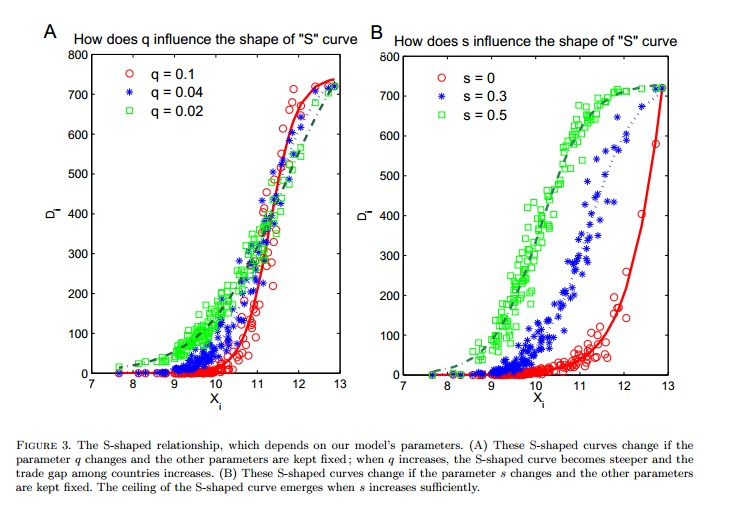超级大国是否遇到多样性优势“天花板” Submission history
来源:
作者:
发布时间:2014-05-16
浏览次数:
一国的经济实力越强,它就可以生产越多种类的产品,这是显见的事实。但是令人吃惊的是,国家的GDP数量级(Log GDP)与它所出口的产品种类数之间存在着一条S型的曲线。这意味着:多样性存在着一个天花板:超级大国并不比中等大国具有更强的多样性优势。本文对这一现象进行了解释。我们假设:国家所具有的基本能力:包括天然资源、技术、管理水平等等决定了它所能生产的产品。而这些基本能力之间的可替代性恰恰造就了多样性的”天花板“效应:火力和太阳能都同样可以用来创造电力,这使得超级大国并不如它们期待的那样垄断所有产品。

研究成果
Capabilities' Substitutability and the "S" Curve of Export Diversity
(Submitted on 7 Apr 2013)
Product diversity, which is highly important in economic systems, has been highlighted by recent studies on international trade. We found an empirical pattern, designated as the "S-shaped curve", that models the relationship between economic size (logarithmic GDP) and export diversity (the number of varieties of export products) on the detailed international trade data. As the economic size of a country begins to increase, its export diversity initially increases in an exponential manner, but overtime, this diversity growth slows and eventually reaches an upper limit. The interdependence between size and diversity takes the shape of an S-shaped curve that an be fitted by a logistic equation. To explain this phenomenon, we introduce a new parameter called "substitutability" into the list of capabilities or factors of products in the tri-partite network model (i.e., the country-capability-product model) of Hidalgo et al. As we observe, when the substitutability is zero, the model returns to Hidalgo's original model but failed to reproduce the S-shaped curve. However, in a plot of data, the data increasingly resembles an the S-shaped curve as the substitutability expands. Therefore, the diversity ceiling effect can be explained by the substitutability of different capabilities.
Submission history
From: Jiang Zhang [view email][v1] Sun, 7 Apr 2013 13:04:16 GMT (248kb)
原文链接:


